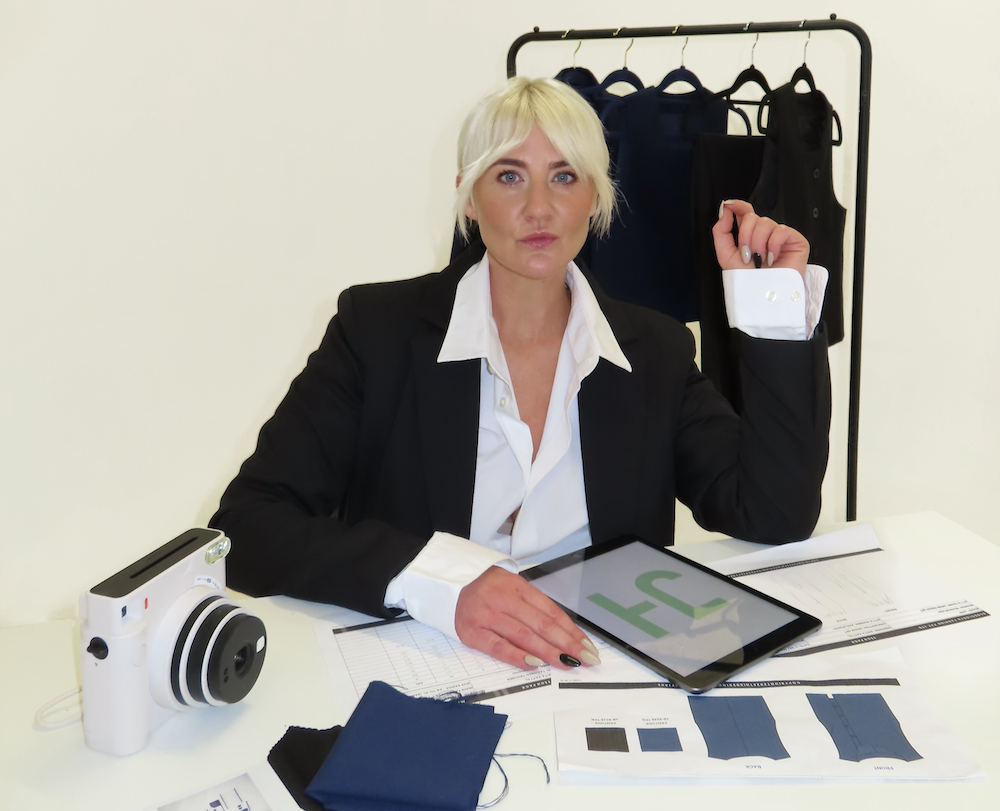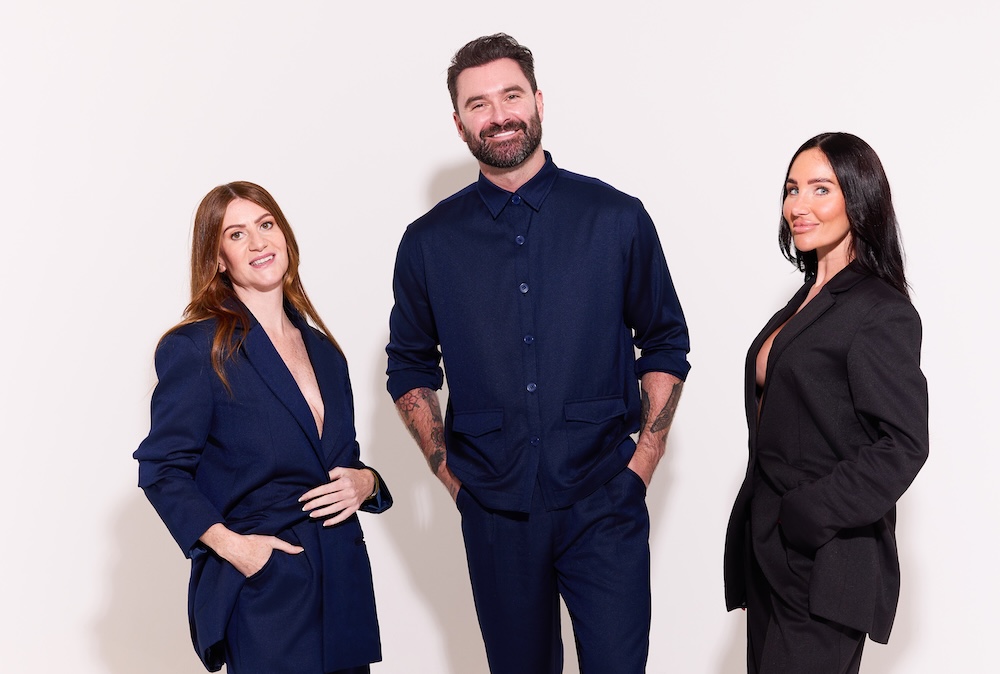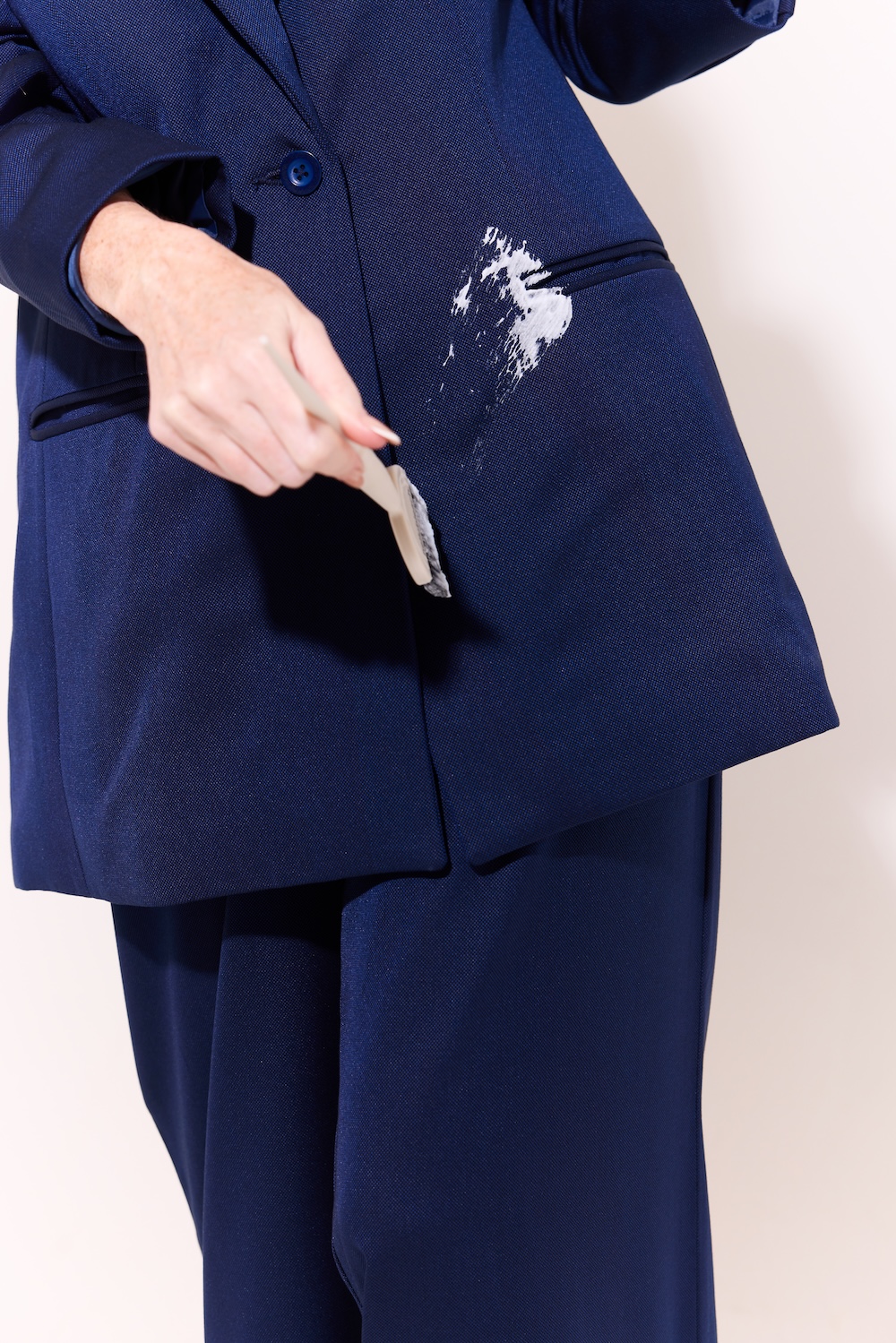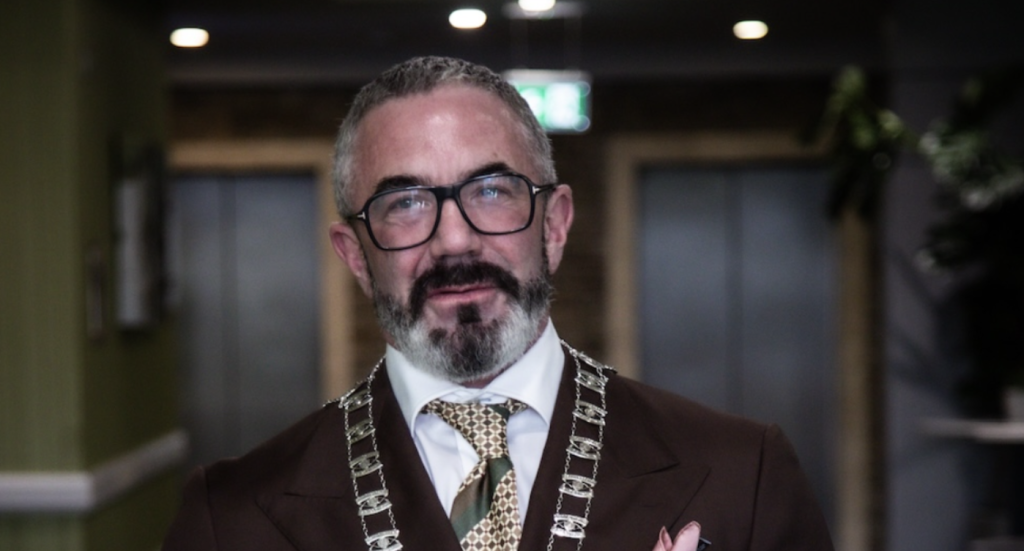“There’s A Massive Problem. And We’re Going To Fix It!”
Jade Hayter’s new capsule collection of salon-friendly fashion is not just elegantly tailored, it will help you do your bit to save the planet.
by CATHERINE | INFORM

Jade Hayter
Make no mistake, Jade Hayter, hairdresser and founder of the 145 Collective, a hub for freelancers and businesses in Glasgow, loves fashion. It’s fast fashion she has a problem with, the production of rapid, low-cost, trend-driven clothing that drives nearly 10 per cent of global carbon emissions, consumes huge amounts of water – and the vast majority of which ends up in landfill.
Adding to her feeling of unease was the discovery that 140,000 metric tons of that textile waste are generated by hairdressers – mainly garments discarded after contamination by hair colour and bleach. This high risk of damage means hairdressers often resort to wearing cheap clothing in the workplace, perpetuating the disposable clothing culture. But while there were plenty of discussions around sustainability focused on chemical waste from products, it seemed nobody was talking about the impact of textile waste. Something, it occurred to Jade, had to be done.
“There was nowhere that I could buy really nice, tailored clothes that weren’t going to get ruined at work,” she says. I’m talking about the clothes that I like to wear on days when I don’t have clients or when I’m not doing colour. And that got me thinking, ‘What I need are some really nice statement pieces that I can wear to work and not have to worry about them.’ And when I did a deep-dive into the stats around how much clothes get ruined at work, I was disgusted. And I thought, ‘There has to be a better option.’”

The capsule collection includes smart tailored pieces for men and women
Jade, who studied fashion and textiles before becoming a hairdresser, set about her mission of re-writing the fashion cycle by designing a collection of elevated, bleach-proof clothing that would appeal to the modern hair pro, last longer, be kinder to the planet and which could be worn season after season. In the end, it took her almost a year before she discovered a fabric that was up to the task – a coated polyester that is almost 100 per cent bleach-proof – but now, with the launch of her new business, her dream has now finally become reality.
Available to pre-order exclusively now at jadehayter.com (get a 20 per cent discount using code JH20 until 31 July), Jade’s launch collection consists of an oversized blazer, a waistcoat and trousers for women, plus an oversized shirt and trousers for guys (though Jade is keen to point out that men have also asked to wear the blazer). Smartly tailored and with beautifully detailed stitching and buttons, the collection is currently available in black and navy-blue options, with plans to release the styles in different colours moving forward. A classic T-shirt is also in the pipeline.
“I’m not saying you have to wear top-to-toe Jade Hayter,” she says. “This is a capsule collection and the idea is that you can combine these pieces with other items of your own. I’m more interested in creating a movement where you’re educating people on how to wear clothes well. It’s imperative that we have a capsule wardrobe that we don’t discard, we actually keep adding different pieces s we move forward. The key thing about fast fashion is that constant new season, new this, new that. I wanted to design pieces that are timeless, that suit any age, any style – it’s for everyone.”
All articles are bleach- and tint-proof and designed to last
With prices starting at £65 for the waistcoat and rising to £140 for the blazer, Jade realises this presents a challenge when it comes to her desire to halt the rise of fast fashion. While shoppers, and particularly the younger generation, say they’re concerned about sustainability, a recent study by Sheffield Hallam University found that nine out of 10 Gen Z-ers are still buying fast fashion. The fact that Shein adds, on average, an eye-watering 6,000 new styles to its website every day shows the scale of what she’s facing.
Jade insists her clothes will never go on sale (“This is such a driving factor in fast fashion”) but she’s offering an initial 20 per cent discount on orders and in the longer term will introduce a reuse andrecycle initiative where clothing can be returned to be cleaned, repaired and re-sold at a discount price. All the packaging is 100 per cent curbside recycled, too.
“The fact that it’s normalised in our industry just to bin clothes that are ruined needs to stop,” saysJade. “It’s a massive problem but it needs to be fixed and I really do want to change things. People have laughed at me because I’m just one person, but I’m so passionate about my brand and what it can achieve. What I’m doing really stands out from other bleach-proof lines that are popping up but that are emulating fast fashion. There’s room for everyone and I want to build a community of stylish hairdressers who want to do good and look good. If I can change the way someone thinks about purchasing, then I’ve done what I set out to do.”
How Does Fast Fashion Affect The Environment?
According to the United Nations, the fashion industry is responsible for between 8 and 10 per cent of all global carbon emissions*. That’s more than all international flights and shipping combined.
It also accounts for 20 per cent of all wastewater production. About 93bn cubic metres of water – enough for 5 million people to survive – is used by the fashion industry every year.
A significant portion of discarded clothing ends up in landfill. Globally, the textile industry occupies roughly 5 per cent of all landfill space, with about 92 million tons of textile waste produced every year.
Only 1 per cent of used clothes are recycled into new clothes, according to the European Parliament. On average, Europeans use nearly 26kg of textiles and discard about 11kg of them every year. Most (87 per cent) are incinerated or landfilled.
The rise of fast fashion has been crucial in the increase of clothing consumption, driven partly by social media and the industry bringing fashion to consumers at a faster pace than in the past.
New strategies to tackle this issue include developing new business models for clothing rental, designing products in a way that would make re-use and recycling easier (circular fashion), convincing consumers to buy clothes of better quality that last longer (slow fashion) and generally steering consumer behaviour towards more sustainable options.
Despite the growing popularity of sustainable and ethically made fashion among younger generations,fast fashion is growing rapidly in volume and profit. According to research by CoherentMI, in the United States alone, fast fashion was worth $41.15 billion in the year 2023 and is anticipated to reach $59.85 billion by 2030.













